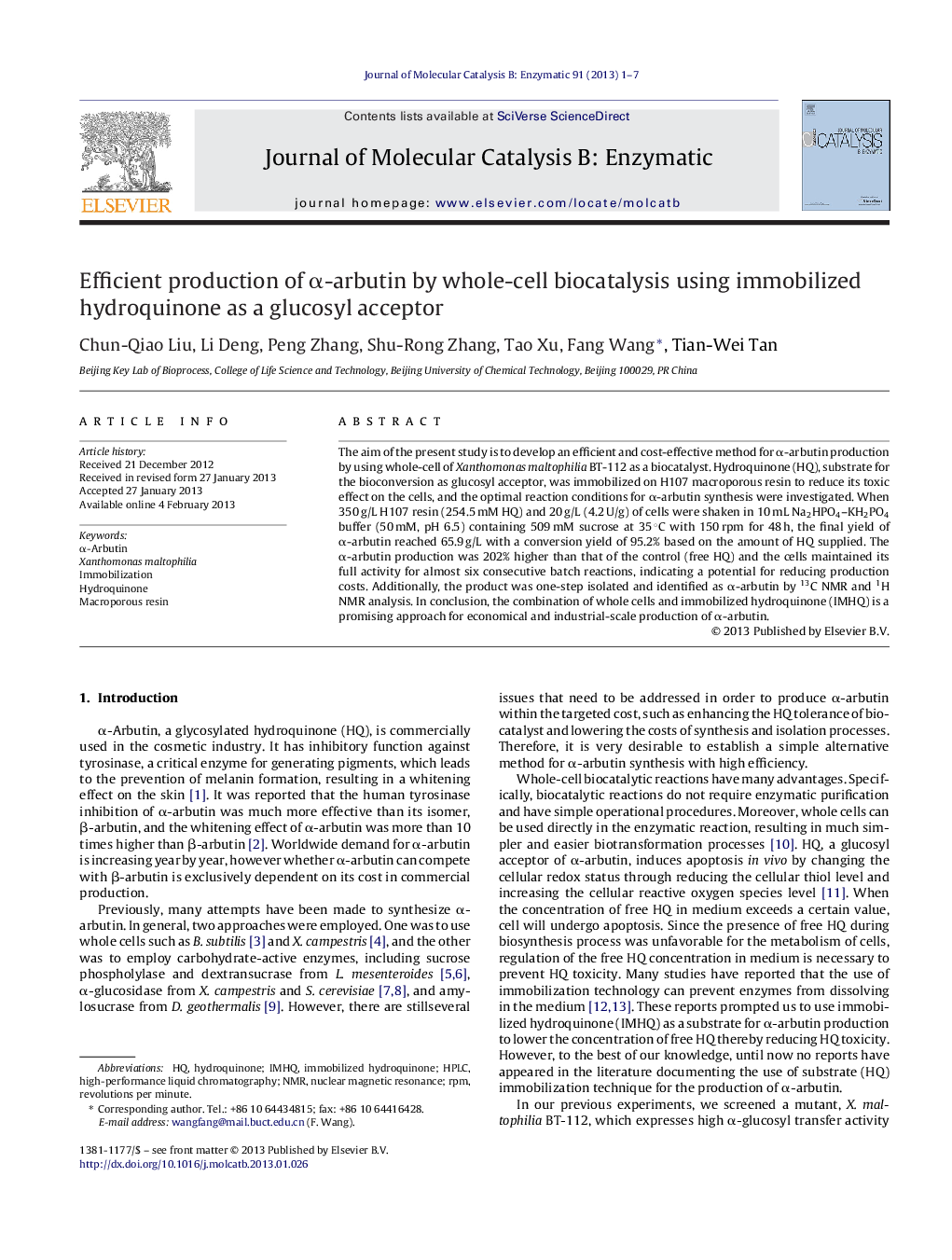| Article ID | Journal | Published Year | Pages | File Type |
|---|---|---|---|---|
| 69912 | Journal of Molecular Catalysis B: Enzymatic | 2013 | 7 Pages |
The aim of the present study is to develop an efficient and cost-effective method for α-arbutin production by using whole-cell of Xanthomonas maltophilia BT-112 as a biocatalyst. Hydroquinone (HQ), substrate for the bioconversion as glucosyl acceptor, was immobilized on H107 macroporous resin to reduce its toxic effect on the cells, and the optimal reaction conditions for α-arbutin synthesis were investigated. When 350 g/L H107 resin (254.5 mM HQ) and 20 g/L (4.2 U/g) of cells were shaken in 10 mL Na2HPO4–KH2PO4 buffer (50 mM, pH 6.5) containing 509 mM sucrose at 35 °C with 150 rpm for 48 h, the final yield of α-arbutin reached 65.9 g/L with a conversion yield of 95.2% based on the amount of HQ supplied. The α-arbutin production was 202% higher than that of the control (free HQ) and the cells maintained its full activity for almost six consecutive batch reactions, indicating a potential for reducing production costs. Additionally, the product was one-step isolated and identified as α-arbutin by 13C NMR and 1H NMR analysis. In conclusion, the combination of whole cells and immobilized hydroquinone (IMHQ) is a promising approach for economical and industrial-scale production of α-arbutin.
Graphical abstractFigure optionsDownload full-size imageDownload as PowerPoint slideHighlights► The study provided a promising approach for economical production of α-arbutin. ► H107 resin was selected as hydroquinone immobilization medium. ► The yield of α-arbutin reached 65.9 g/L with a conversion yield of 95.2%. ► The reusability of Xanthomonas maltophilia BT-112 cells reached six batches.
